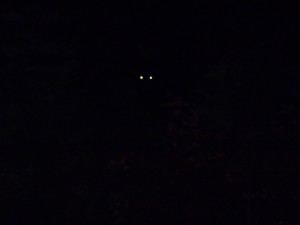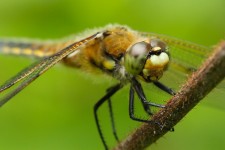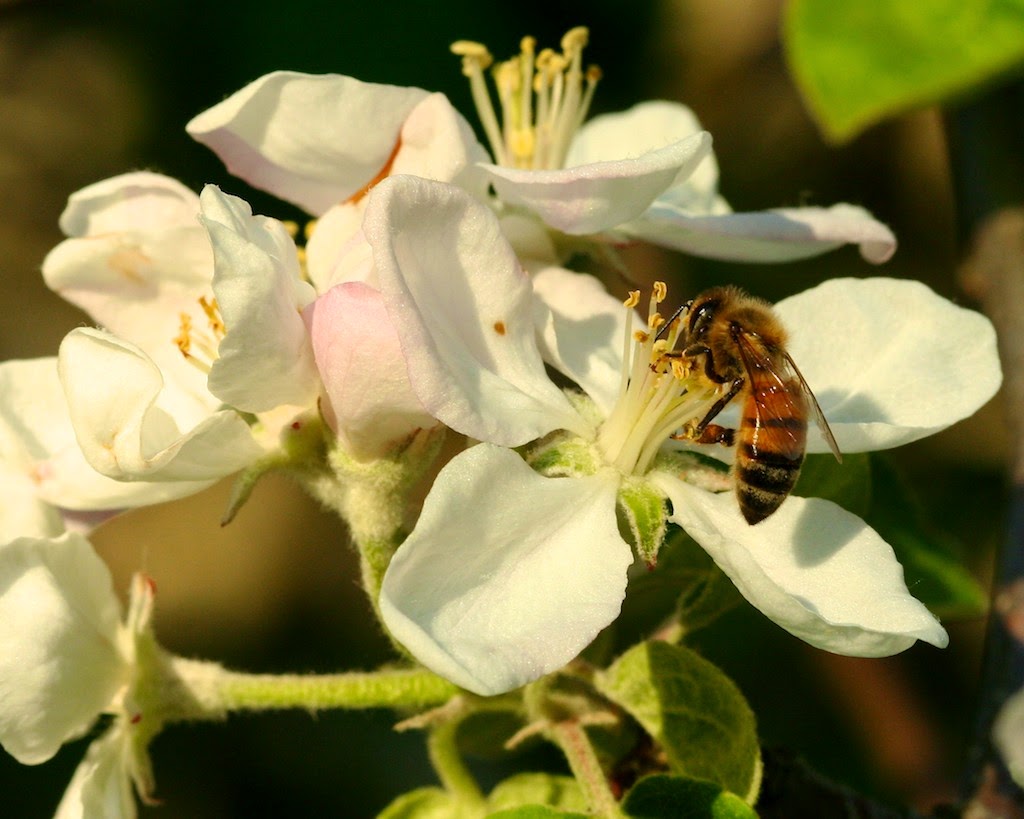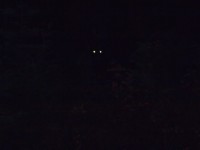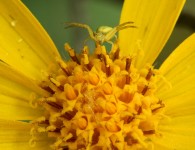Most familiar to us are animals with two eyes. But some animals have more than two eyes–a spider has eight eyes, a lizard three eyes and sea stars have one eye on each arm.
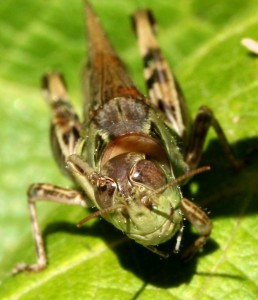
Can you find the grasshopper’s five eyes? The obvious eyes are the two large compound eyes. The three other eyes are simple eyes–the small circles between each compound eye and antenna, and between the antennae and mouth.
A grasshopper has two compound eyes on the sides of its head, an eye behind each antenna and one eye in the middle of its forehead. What do grasshoppers see?
Even more unusual is the horseshoe crab which has five small eyes on the top of its shell, two compound eyes on the sides of the shell, two eyes in the middle of its body and one eye spot under its tail. What does it see?
Eye position makes a big difference to what an animal can see. How much an animal can see without turning its head (or body in some cases) is called field of view.
Our eyes face forward so our field of view is forward and slightly to the sides. The advantage of having our eyes on the front of our heads is 3-D vision (also called binocular vision). Our brains combine the view from both eyes to produce a 3-D view that allows us to walk down stairs, catch a baseball or shake someone’s hand.
Animals with eyes on the sides of their heads, like rabbits, horses and ducks, have more side vision than us. Side vision has the advantage of allowing the animal to see what might be coming from above, the side or even behind–the usual directions a predator approaches.
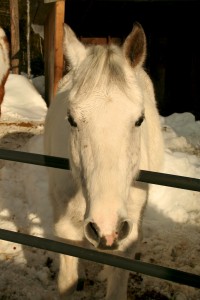
Although all horses have eyes on the sides of their heads, the placement varies depending on breed. The shape of their face determines whether they can see behind themselves or not.
The eyes of some horses have such tremendous peripheral vision they can almost see behind them. But that also means they can’t see right in front of their nose.
Chameleons may have the strangest view of all–their eyes are independent of each others so they can look in two different directions at once!
We can only imagine what other animals see sometimes. But a clear, full moon night provides a glimpse of what nocturnal animals see.
Some animals, like rattlesnakes, have poor color vision during the day but incredible vision at night because that is when they hunt.
A high number of rod cells and bigger eyes contributes to excellent night vision. Bigger eyes collect more light which is why owls have good night vision (an owl’s head is smaller than ours but its eyes are bigger).
Another structure that helps animals see at night is the tapetum, a reflector at the back of the eye. The “deer in the headlights” eye glow is a result of the tapetum reflecting light back out of the eye. For animals, the tapetum doubles the amount of light their eyes can use. Some animals with tapetum include raccoons, cats, cows, sharks, crocodiles, deer, zebra, lions and moths.
Rattlesnakes have another structure that helps them hunt at night but it isn’t an eye structure. Instead they have holes between the eye and nostril on both sides of their snout that sense infrared light. Their brain merges the sensed information with visual information to produce an image somewhat like an infrared camera.
We can only guess at what an animal sees based on our knowledge of how our eyes work. An animal’s eyes are tools to understand the world and the real “seeing” happens in the brain where all the information is processed. We may never fully know what an animal “sees” until we can understand their brain.

